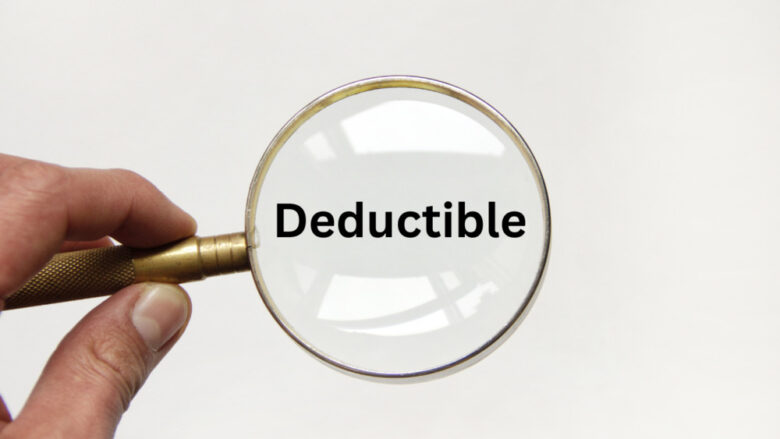When it comes to car insurance, knowing your deductible is important to keep track of your costs and benefits. A deductible is the amount you must pay out of pocket before your insurance starts paying. This is essentially a way for the insurance company to share risk with you, which affects how much you pay for the policy. We discuss what auto insurance deductibles are, how they work, and how they can change your policy.
How Do You Calculate the Deductible of Your Car Insurance:
When you are involved in an accident or file a claim, you are responsible for paying a certain amount and the insurance company will pay the rest. This is called a deductible. Suppose you have a deductible of €500 and your car has €2,000 in damage. You pay the first €500 and your insurance covers the remaining €1,500. This plan helps lower your insurance rates because you agree to pay some of the costs yourself.
Different Types of Car Insurance Deductibles:
There are two main types of deductibles in car insurance: the damage deductible and the comprehensive deductible. A collision deductible covers damage caused by a collision with another car or other object, while a comprehensive deductible covers damage caused by causes other than a collision, such as theft, vandalism or natural disasters. The amount you set for each type of deductible affects the total cost of your insurance. Typically, a higher deductible means lower premiums, and a lower deductible means higher premiums.
How the Deductible Affects the Premium:
When choosing out-of-pocket expenses, it is important to consider your financial situation and your ability to pay out-of-pocket expenses. If you increase your deductible, your monthly premium may decrease. This can make your insurance cheaper in the short term. But it does mean you’ll need more cash if you need to make a claim. On the other hand, if you have a smaller deductible, your monthly premiums will increase, but you will pay less if a claim is made.
What You Should Pay Attention to When Choosing Your Deductible:
To choose the right amount, you need to consider your budget and insurance costs. It’s important to think about how much you could realistically pay if something were to happen to you. If you choose a high deductible to save on premiums, make sure your savings are sufficient to meet the deductible if necessary. On the other hand, if you don’t want to pay as much during a claim, you can opt for a smaller deductible, even if it means your premiums will be higher.
How often you drive and your risk level are two other things to consider. If you drive a lot or travel in dangerous areas, a lower deductible may help you as you are more likely to make a claim. On the other hand, if you don’t drive often or are confident in your driving skills, a higher deductible could save you money.
Check and Change Your Deductible:
Additionally, it’s a good idea to check your deductible options regularly. Your circumstances may change. For example, you buy a new car or your financial situation changes. This may affect the way you handle your deductible. By reviewing your insurance regularly, you can make changes to get the best coverage and the lowest costs. It also ensures that your deductible still meets your needs.
Flexible Deduction and Discount Options:
Additionally, it’s important to know that some insurance companies allow you to choose your own deductible or offer discounts for larger deductibles. In some cases, insurance companies may offer discounts to policyholders who agree to a higher deductible, indicating that they are less at risk. These changes can give you the opportunity to reduce costs and still get adequate coverage.
Conclusion:
To better manage your benefits and costs, it’s important to understand what deductibles are and how they work. The deductible plays an important role in how much your insurance costs and how much you will have to pay out of pocket during a claim. You can make informed choices about your deductible and find the best combination between premium costs and out-of-pocket expenses by carefully looking at your financial situation, driving behavior and coverage needs.
FAQs:
1. How much does my car insurance premium cost?
A car insurance deductible is the amount you must pay out of pocket before your insurance will pay your claim. If you have a $500 deductible and your car suffers $2,000 in damage, you will only pay $500. Your insurance will then pay the remaining $1,500.
2. How does the deductible affect my insurance rates?
In general, insurance rates decrease when the deductible is higher and increase when the deductible is limited. When your deductible is higher, you have more financial responsibility. This reduces the risk for the insurer and lowers your premium.
3. What are the costs of different types of car insurance?
Collision and comprehensive coverage are the two main types of coverage. A collision deductible covers damage caused by a collision with another car or object, while a comprehensive deductible covers damage caused by causes other than a collision, such as theft, vandalism or natural disasters.
4. Why is the payment amount I choose important?
If you need to make a claim, consider how much you can pay out of pocket so you can choose the right deductible. Find a balance between wanting a lower monthly payment and the willingness to pay out of pocket. You should always review your deductible options if your circumstances change.
5. Can I change my deductible after taking out the policy?
Yes, you can usually change your deductible after you take out your policy. You should always check your deductible options to ensure they still meet your needs. Changing your deductible may affect your premiums and benefits. So consider how these changes will affect your overall insurance costs.



